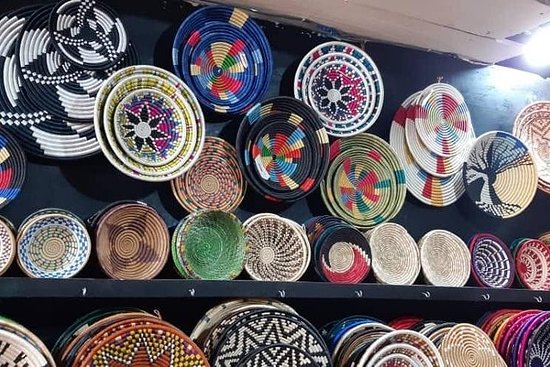Touring Kimironko Market in Kigali-Rwanda: Rwanda, like the rest of East Africa, is known for its vibrant, colourful, and unusual marketplaces. Kimironko Market, in Kigali’s Kimironko area, is the busiest market in town. Locals from all over the city come here to stock up on fruit, vegetables, fabric, clothing, shoes, and general household necessities. Vendors sell produce from Rwanda, Uganda, Kenya, and the Democratic Republic of the Congo, while locals from all over the Kigali city shop here for fruit, vegetables, fabric, clothing, shoes, and general household necessities. This is the location to see Rwanda at its most vibrant.

The vibrant Kimironko Market is set in a sprawling warehouse complex with four equal-sized entrances. The official entrance to the market, where household products and plastic buckets of all shapes and sizes are sold, is located with your back to the Kimironko bus station. The entrance on the right side of the market houses the colorful kinteges fabric, while the entry on the left houses the butchers and fisherman who sell meat and lake fish. The further entrance goes immediately to the market seamstresses and second-hand clothing.

Kimironko Market in Kigali city is busiest in the early afternoon, when sellers have just arrived and are showing their wares for sale. Saturdays and Mondays are often the busiest days of the week, with Sundays considered to be quite sluggish due to many merchants having the day off. The Kimironko bus park serves major public transportation destinations in Kigali, making it easy to get to and from. Buses from all around the city transport enthusiastic shopping to the market gates, while motorcycle taxis and ordinary taxis wait for overburdened shoppers to hire them for a ride home.
Upon entering the main market gates, just opposite the bus park, turn right and go to the distant market walls. Rows and rows of brilliant kinteges cloth are hawked on stalls from all across Africa in that area. Sierra Leone, Nigeria, the Democratic Republic of the Congo, Tanzania, Cote d’Ivoire, and several more countries are represented.
This cloth is traditionally sold by women, and if you buy some, the salespeople will most likely refer you to a seamstress on the kinteges outskirts. These expert tailors are constantly available and happy to manufacture kinteges apparel or accessories in a timely and cost-effective manner. Remember that prices are adjustable throughout the market, and when haggling, keep patient, cool, and steady to receive the greatest offers.
Cut a (largely) straight line from the Kitenge vendors and seamstresses to the far left corner of the market. The narrow lanes are packed with used clothing, tourist things (stop here for a basket or two!), shoes, and a true hardware store before the market opens up into a sprawling fresh produce bazaar.
In black booths, endless potatoes, still caked in earth, are heaped high. Shopping becomes a fine art form as carrots, peppers, tomatoes, zucchini, and eggplant are perfectly packed. On the other end of the complex, you’ll find juicy mangoes, little bananas, sour passion fruit, and tree tomatoes, with avocados the size of your fist in the middle. Melons and pumpkins are trucked in from Uganda, and giant green plantains – still on the branch – fill the aisles.
Oil, spices, garlic, and fresh ginger are sold in neat piles in the front end of the market, towards the bus station, while the egg area is in the left hand corner. The woman selling eggs is a joy, and she has been in the market for many years. Eggs are brought in from all around the city and its environs, with costs varying depending on the location of the bird and the size of the egg.

Then there’s the beef department. The left side of the entry wall is lined with frozen fish, with dried tilapia and isambaza right across the road and amid stacks of lush green vegetables. The butchers are dressed in white doctor’s gowns and wield knives with professional power. If you become tired of walking through the tiny market corridors and crowded aisles, stroll outside the gates and into one of the nearby restaurants for a quick samosa, chapatti, and cool soda.
Though the market is not tiny, it is simple to explore because the things sold are clearly organised by type and hence location. Kimironko Market, with its dizzying assortment of sights, scents, and noises, is obviously overwhelming, but it is a definite must-see in Kigali.


